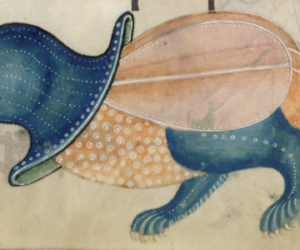
Muslin and The Lost Traditions of Bangladesh
1 – Welcome to #ThreadTalk, muslin edition. Muslin has been all over my feed, so let me cut to the chase:
The finest fabric in human history was perfected by the Bengali people but tragically lost in the wake of imperialism & economic ruin at the hands of the English.
🤬🤬
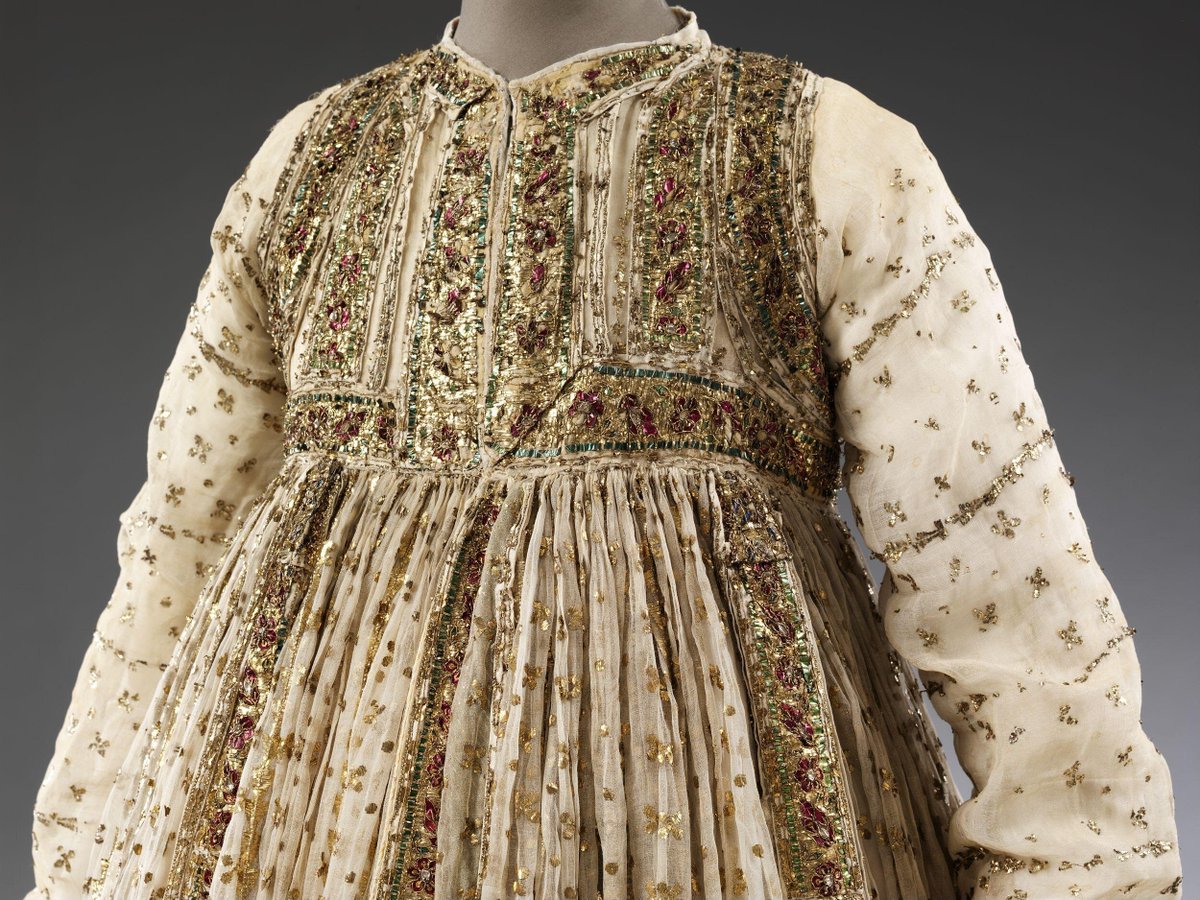
2 – Muslin was once called "The vapor of dawn" by a Chinese trader named Yuan Chwang. Other names were "woven wind" & "wonder gossamer" – yet it's now synomymous with Regency period dramas.
There's no way around this: it is not a happy story. But it's one people need to hear.
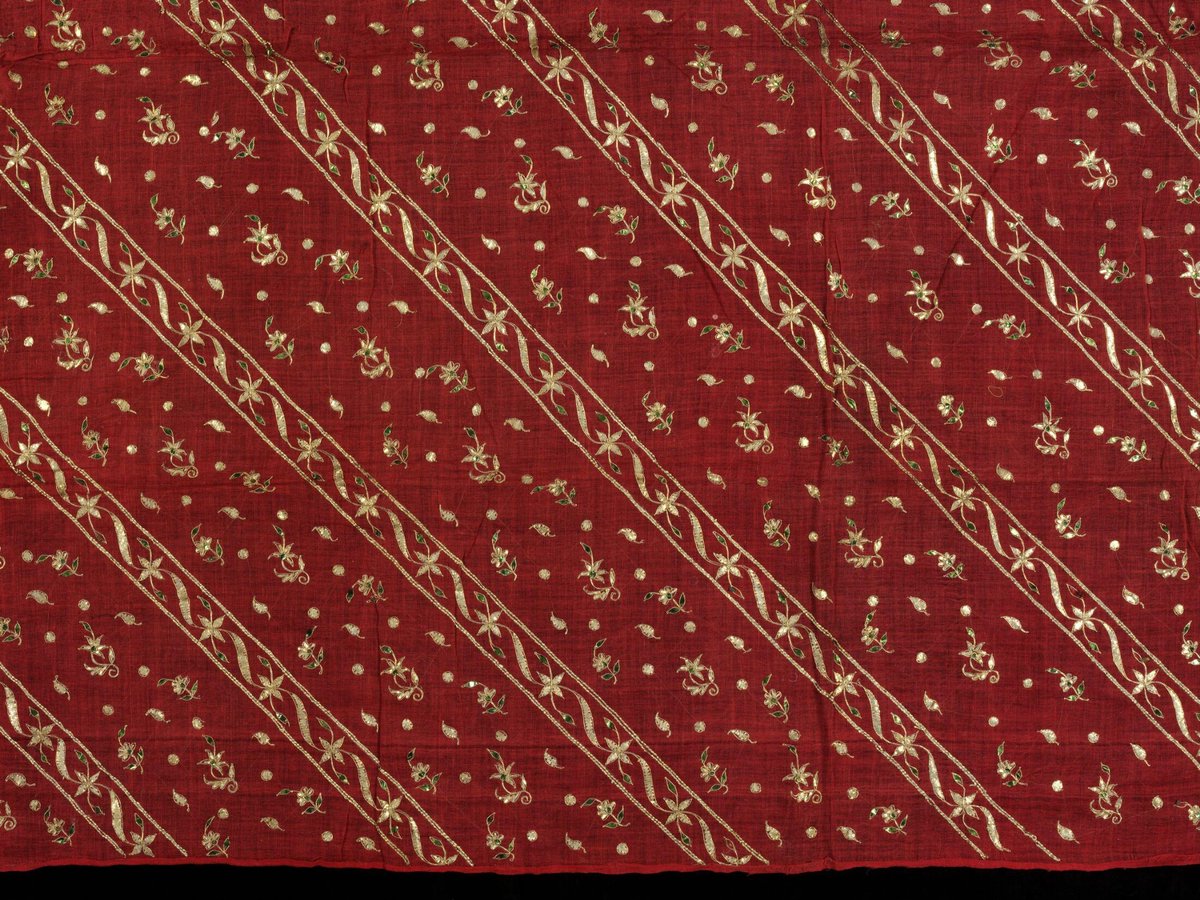
3 – In many ways, this is a companion thread to my original #chintz talk. Chintz and muslin are both made from cotton & both arose to fame b/c of the art, vision, & craft of Indian weavers.
Muslin is a basic plain weave, that means it's just a warp and a weft. But there's more.
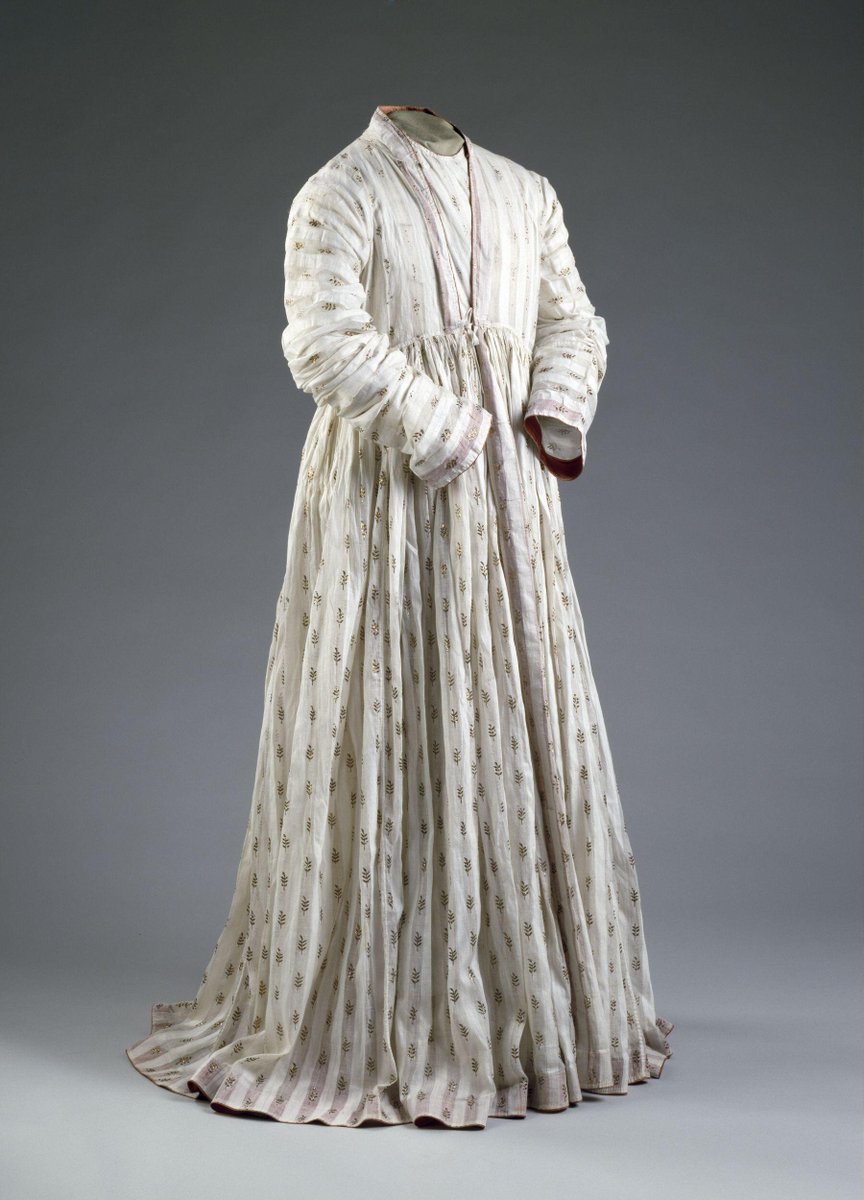
4 – Muslin is a basic plain weave, BUT the fabric is so thin it's almost transparent, breathes easily & is soft with a lustre finish.
At its peak, Bengali muslin was rumored to have 2000+ thread-count BY HAND. The best muslins came from cotton grown along the Brahmaputra river.
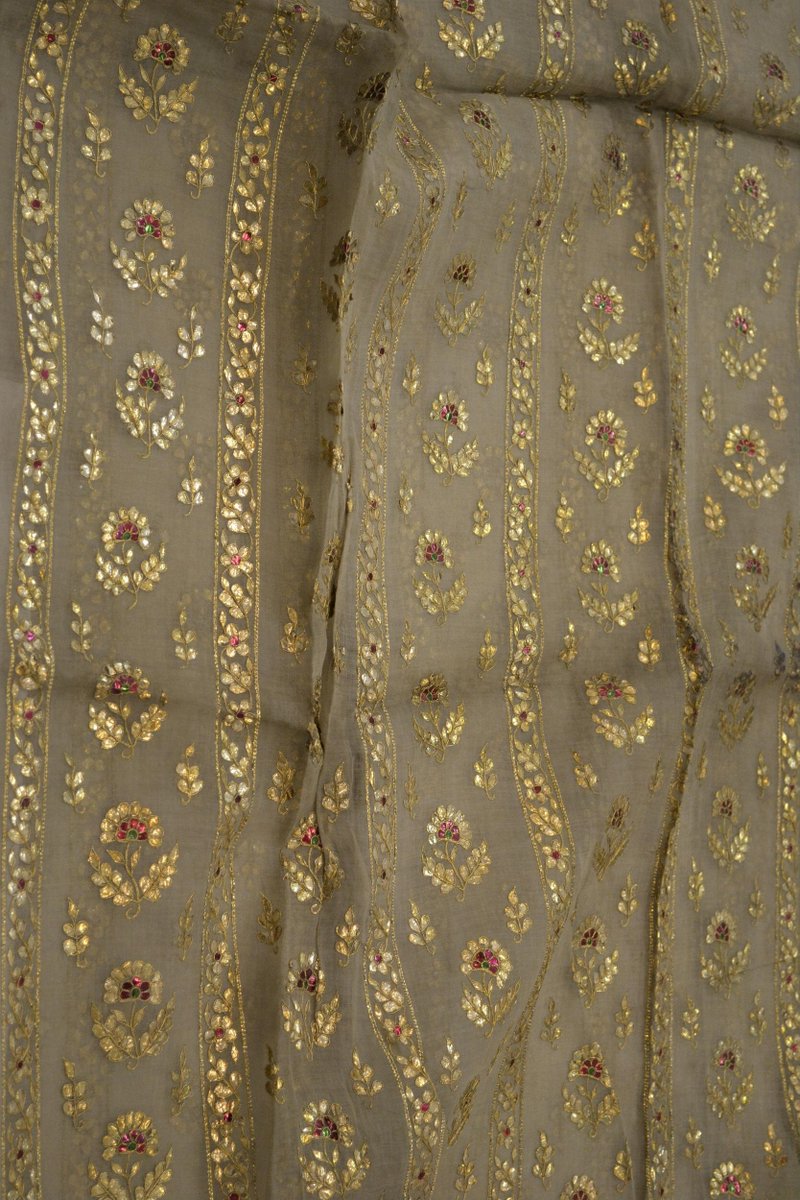
5 – Before we go too far down this thread: in the US "muslin" is not the same fabric we're talking about. That's a rough, cheap material.
What I mean by muslin is the fabric that originated in Iran called Mulmul or Malmal, and eventually was perfected in India.
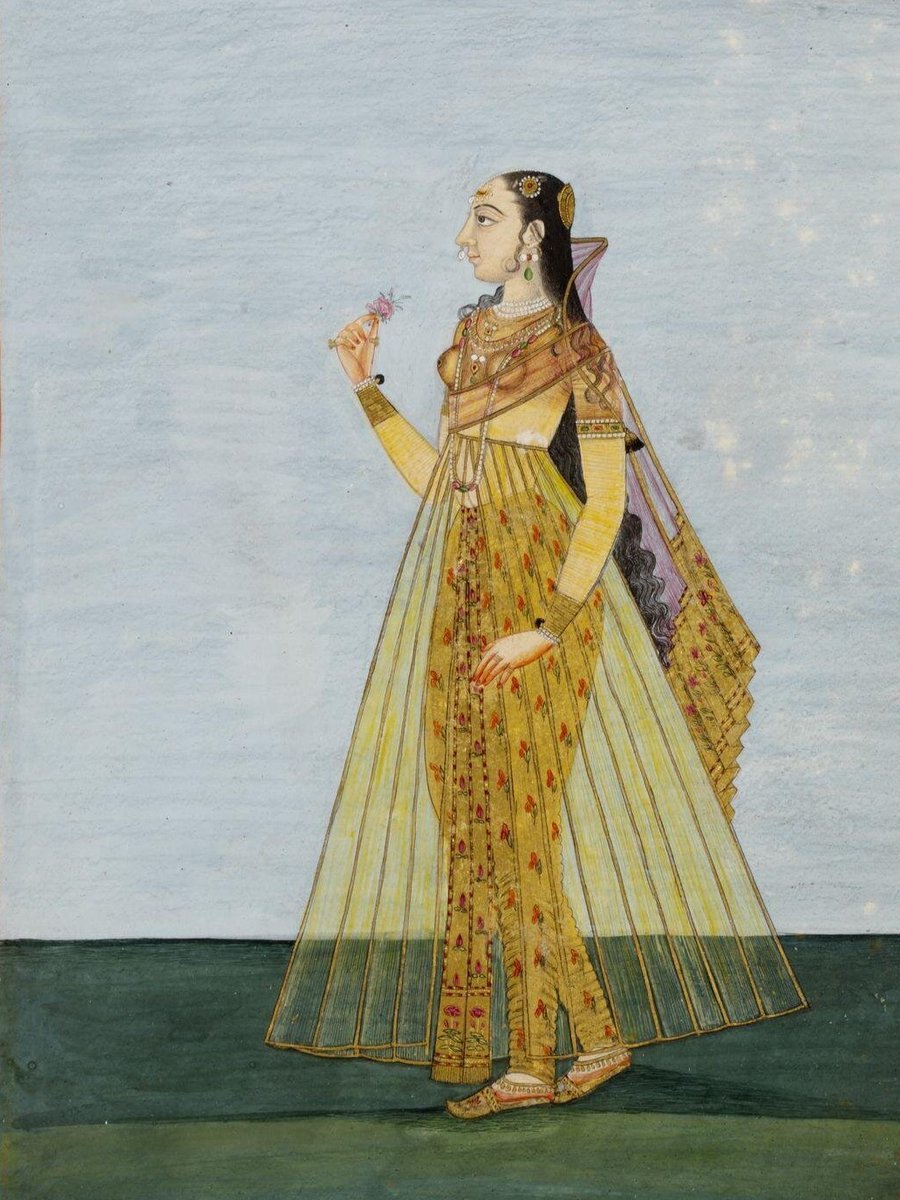
6 – Back to the thread… Artisans even learned to spin at certain, high-humidty parts of the day in order to maintain the springiness of the cotton and create a finer product.
This art, as noted many places, is largely lost. You can see here some more muslin in art.
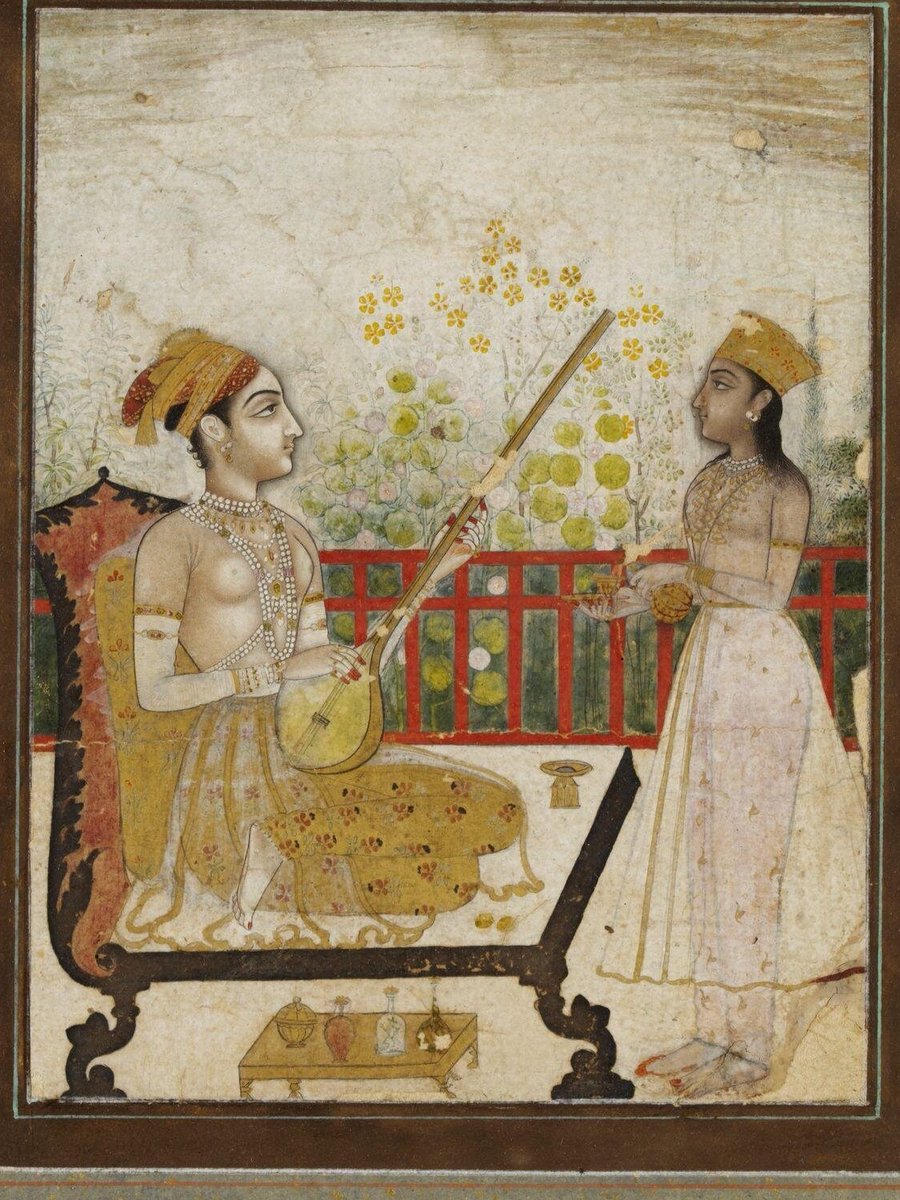
7 – Mughal Bangladesh is where we go, and at the time, it was known as being "paradise on Earth" for its unrivaled commerce, textiles, & wealth.
The Mughal emperors are to thank for this–the very same who ushered in the era of chintz. Shah Jahan featured below.

8 – And of all the muslins, Dhaka was the most prized — the price was more than 26x that of even the finest silks. Even today's fine muslins don't come close to them.
The BBC article that circulated earlier this week was a good overview, but they do bury the lede a bit.
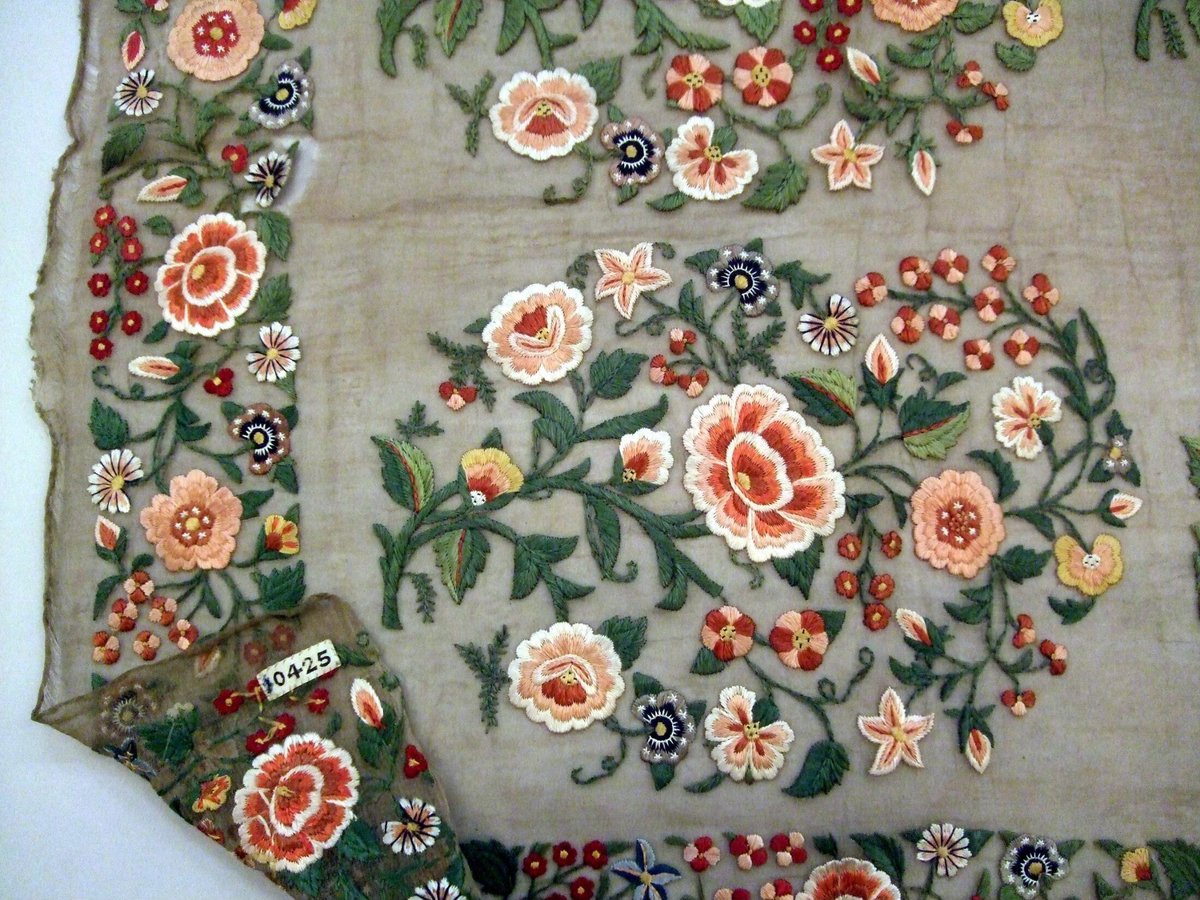
9 – The reason that no one knows how to make Dhaka muslin is because the English purposefully, strategically, & devastatingly ruined the economy of the area once they learned how make muslin themselves.
Then they destroyed their competitors by taxing muslin over 75%.
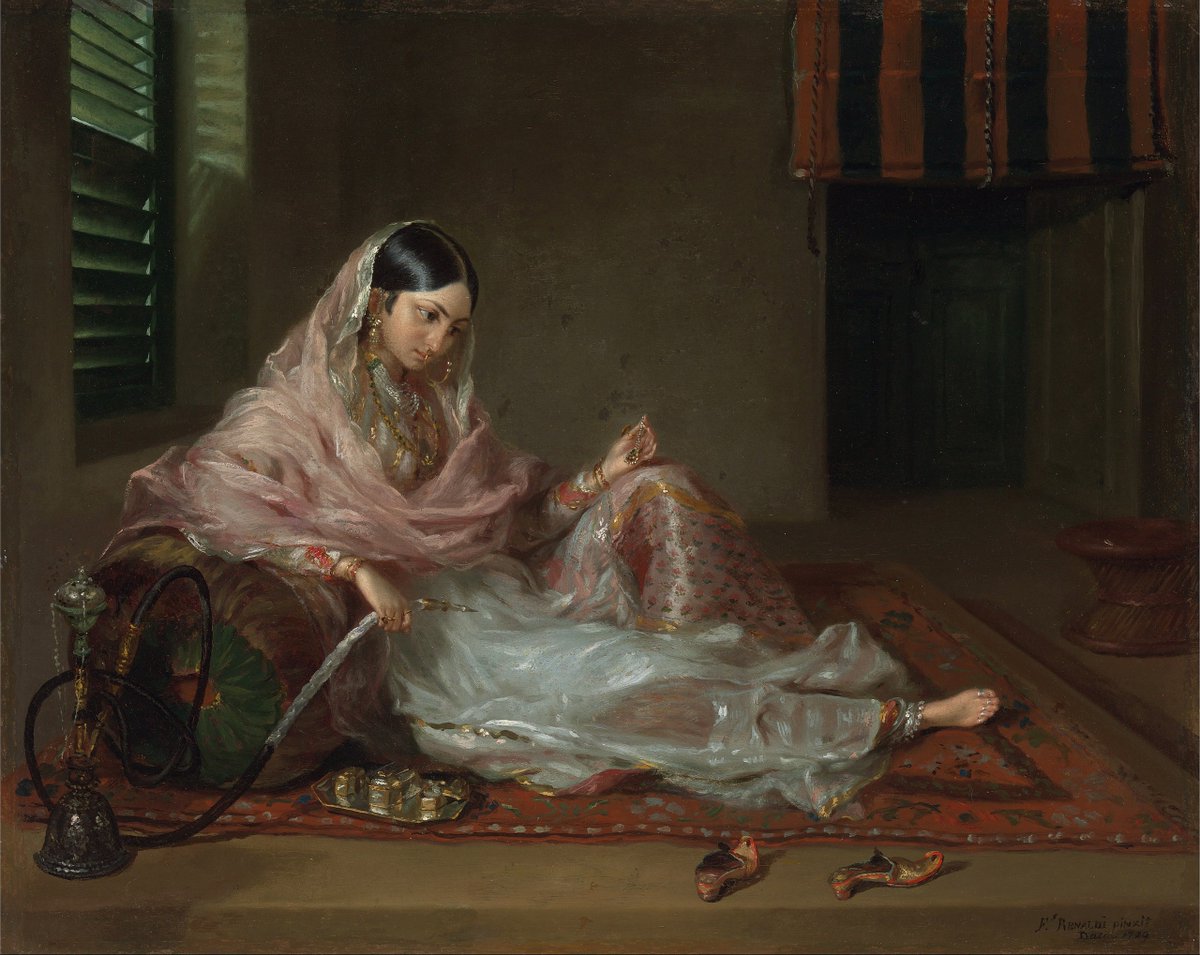
10 – Couple that with a series of natural disasters & the extinction of their cotton plant – Gossypium arboreum var. neglecta (Phuti karpas) – and that's how it "disappears". It was cultural erasure. Deliberate.
Everything "Indian" became trendy. So you get bullshit like this.
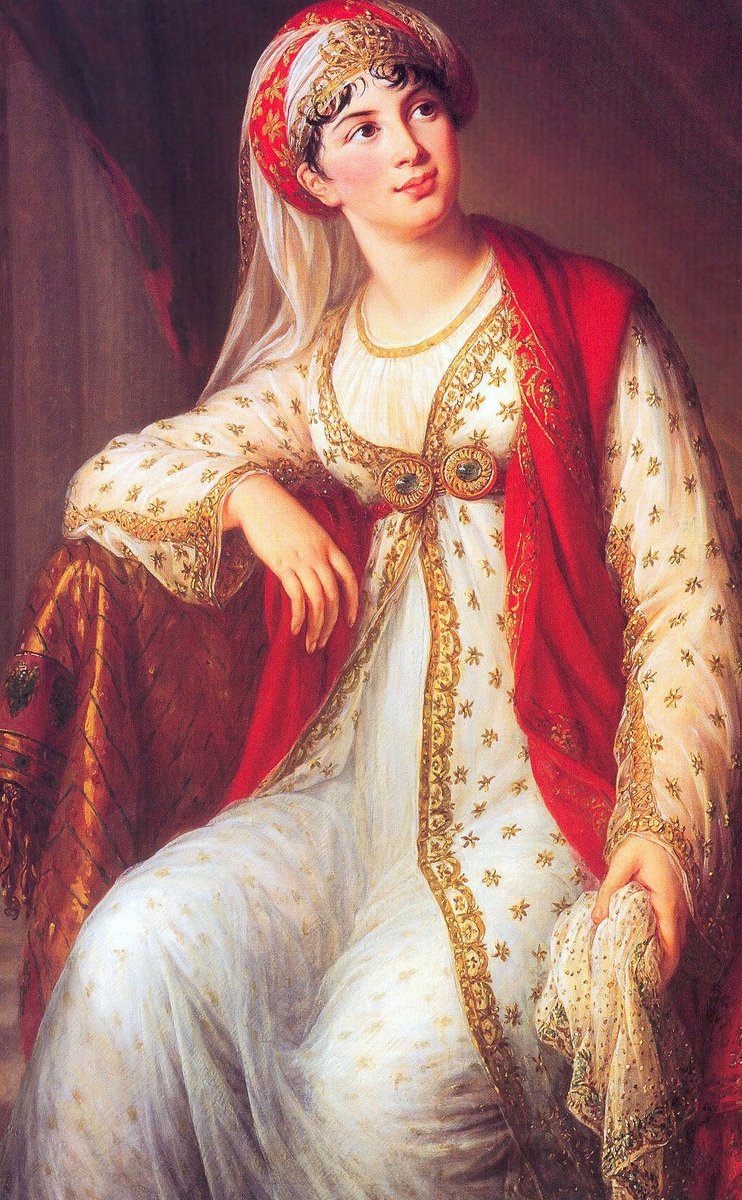
11 – Can you tell I'm pissed off? I'm pissed off. Anyway.
Before muslin became the "trend", it was used primarily in fine clothing for men, in jama coats and turbans.
There are also some stunning jama coats and women's peshwaz gowns that exhibit the incredible detail.
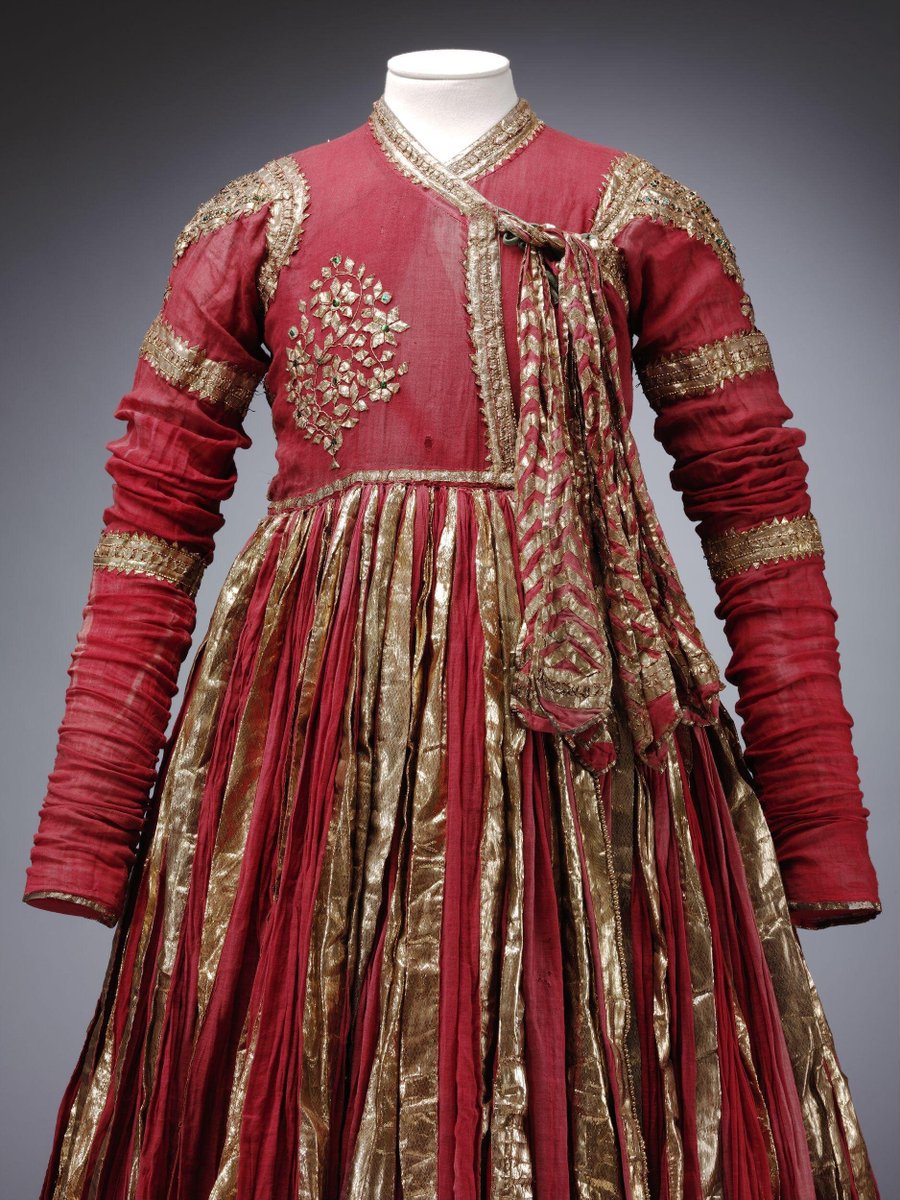
12 – Robert Clive was considered the conqueror of Bengal, & styled himself "Clive of India" — his excuse for plundering the region was basically, "Well, they are so rich and so prosperous they're basically asking for it."
This map is a great overview of what was made where.

13 – Even among his contemporaries, Clive's motives were questioned. Which means he must have been one colossal asshole to get noticed!
Well, this picture is total evidence. I mean, what a wanker. Just. So. Gross. I hate showing art like this, but it really shows effed up it is.

14 – Muslin took France by storm in the 18th century & its herald was Marie Antoinette. She scandalized high society by posing for a portrait in a muslin dress.
She was trying to evoke a "pastoral" appearance, but it did not endear her to the masses.
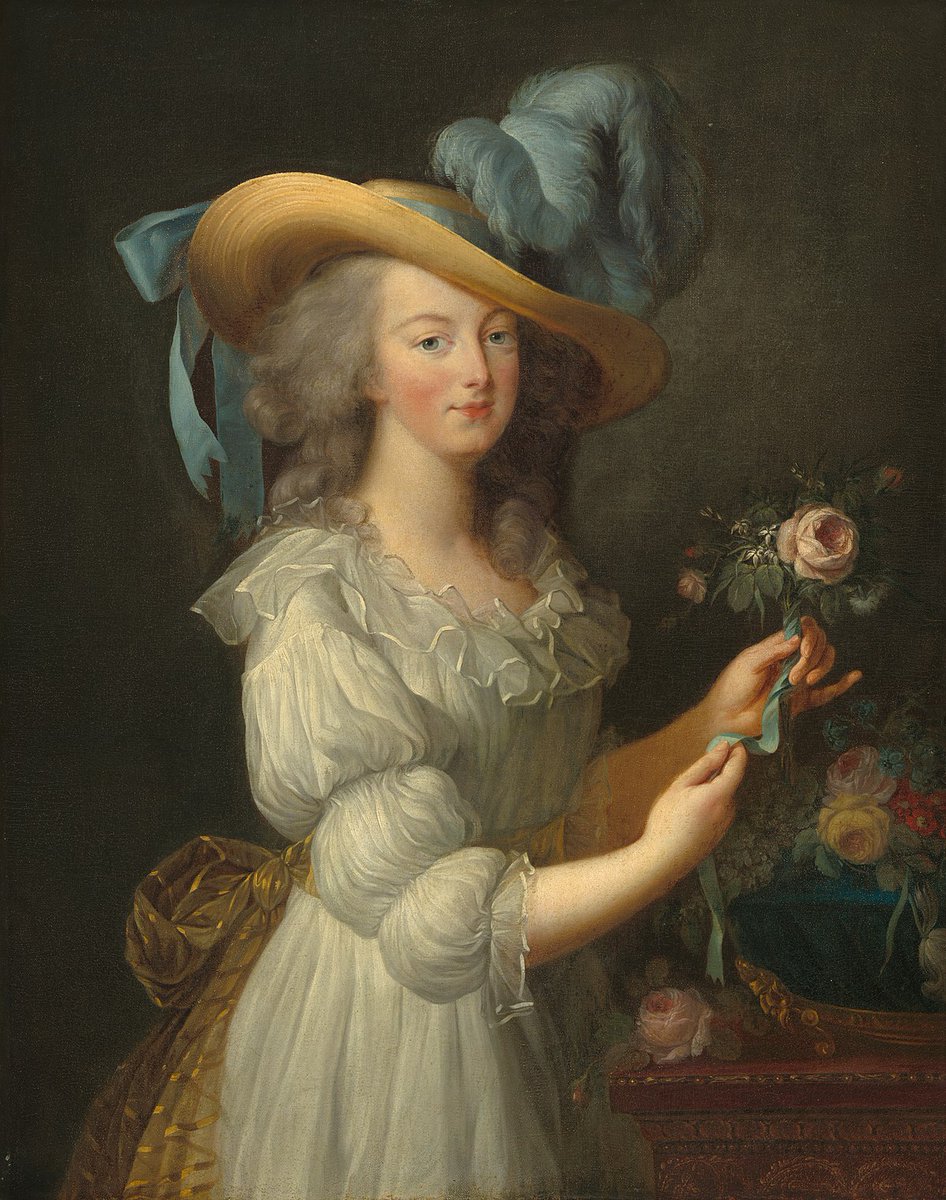
15 – Not everyone lost their heads over muslin (ooof, sorry) quite like Marie, because the long Regency became the golden age of muslin.
You can't tell me that the high-waisted design of traditional Indian pieces didn't influence Georgian & Regency dress.

16 – By the 18th c, England was cuckoo for India. Quoting Defoe: ‘It crept into our houses, our closers, our bedchambers; curtains, cushion, chairs, and at last beds themselves were nothing but Calicoes or Indian stuffs.’
"It."

17 – And then came Jane Austen, and the long Regency, and what we now consider the "peak" of Western muslin.
Are the gowns beautiful? Yes. Are they "authentically English" — not even close. Yes, they afforded women more movement & comfort. But at what cost?
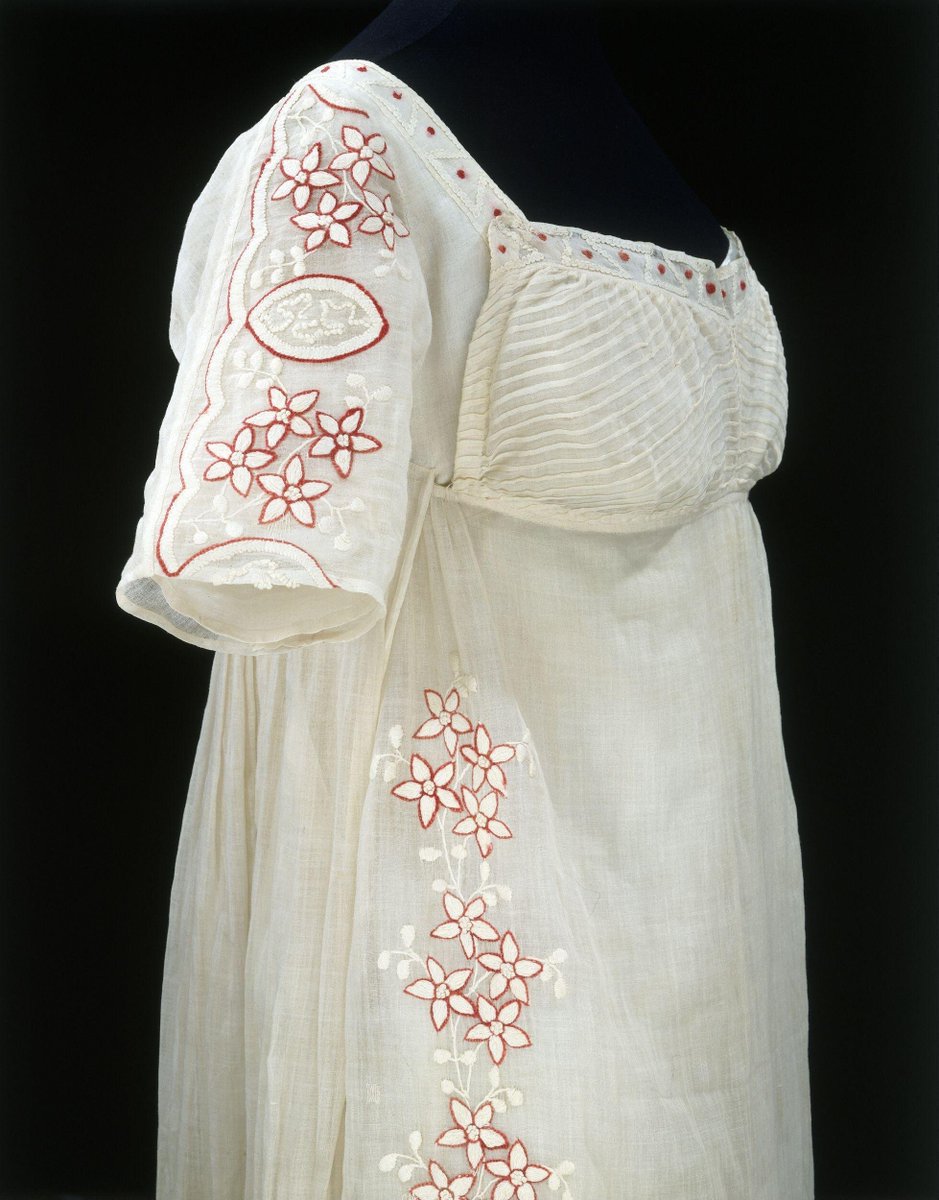
18 – I knew about the appropriation of Indian fabrics. What I didn't know was the economic devastation of Bangladesh that lingers still.
It was rumored that the British had artisan's thumbs cut off to prevent them from weaving. Apocryphal or not, the impact was horrific.
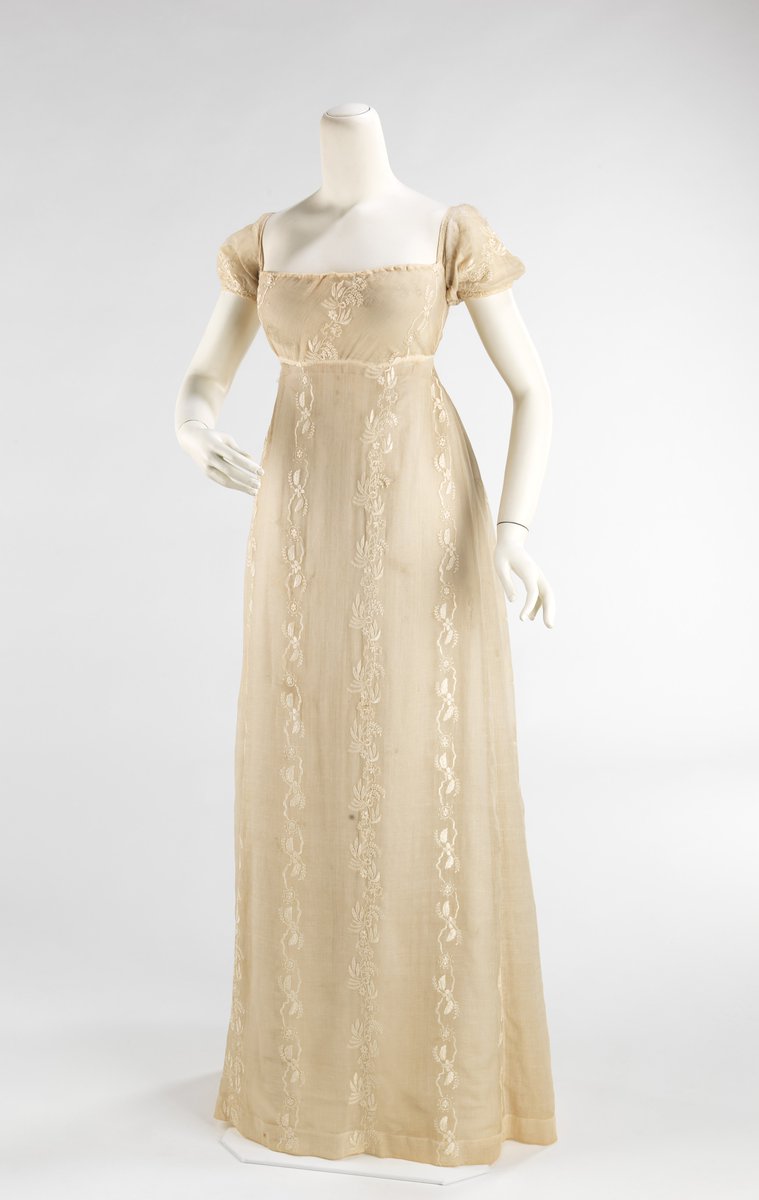
19 – Not to mention the idea of "purity" and what it would take to keep a gown clean. The $ of Dhaka muslin was huge, but everyone wanted it.
So, like with chintz, the English figured out how to do it & did it cheaper. Hence: many muslin wedding gowns like this one from 1837.
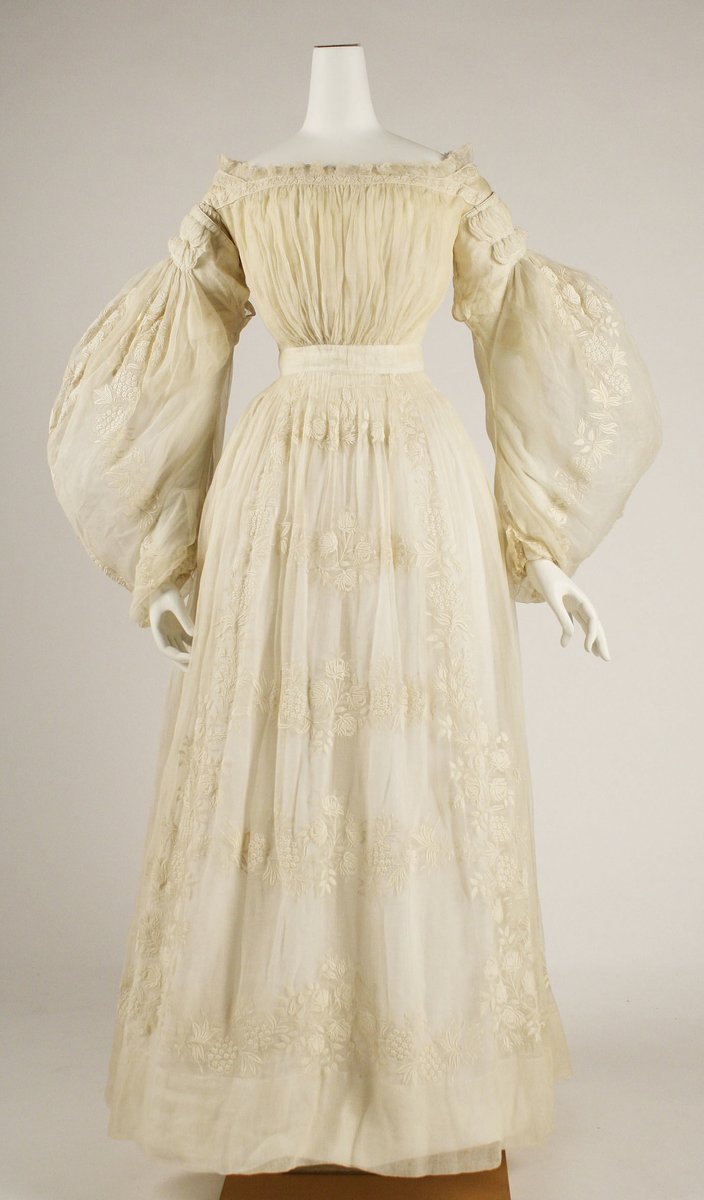
20 – The Bengali people lost their heritage, and though there are efforts to rekindle the art–including DNA sequencing extinct cotton–it is a stark reminder of the evils of imperialism.
This video gives you a view into the process of the handwork.
21 – Muslin production continued into the 20th century, but it is not as popular now. Still, there are some notable gowns, including this one that is pretty much Daphne's dress from #bridgertonnetflix.
It dates to 1810-1815, and those are beads on the muslin.
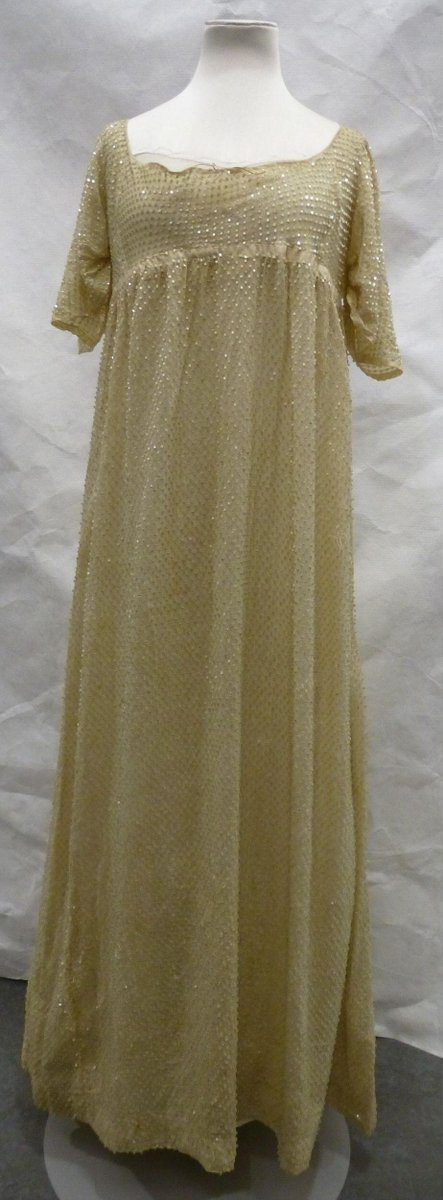
22 – This one is quite something and is decorated with beetle wings (another thing from Mughal India).
Which reminds me: untreated muslin gowns with all those layers were TERRIBLE fire hazards. So much so that it was almost as bad as crinolines.
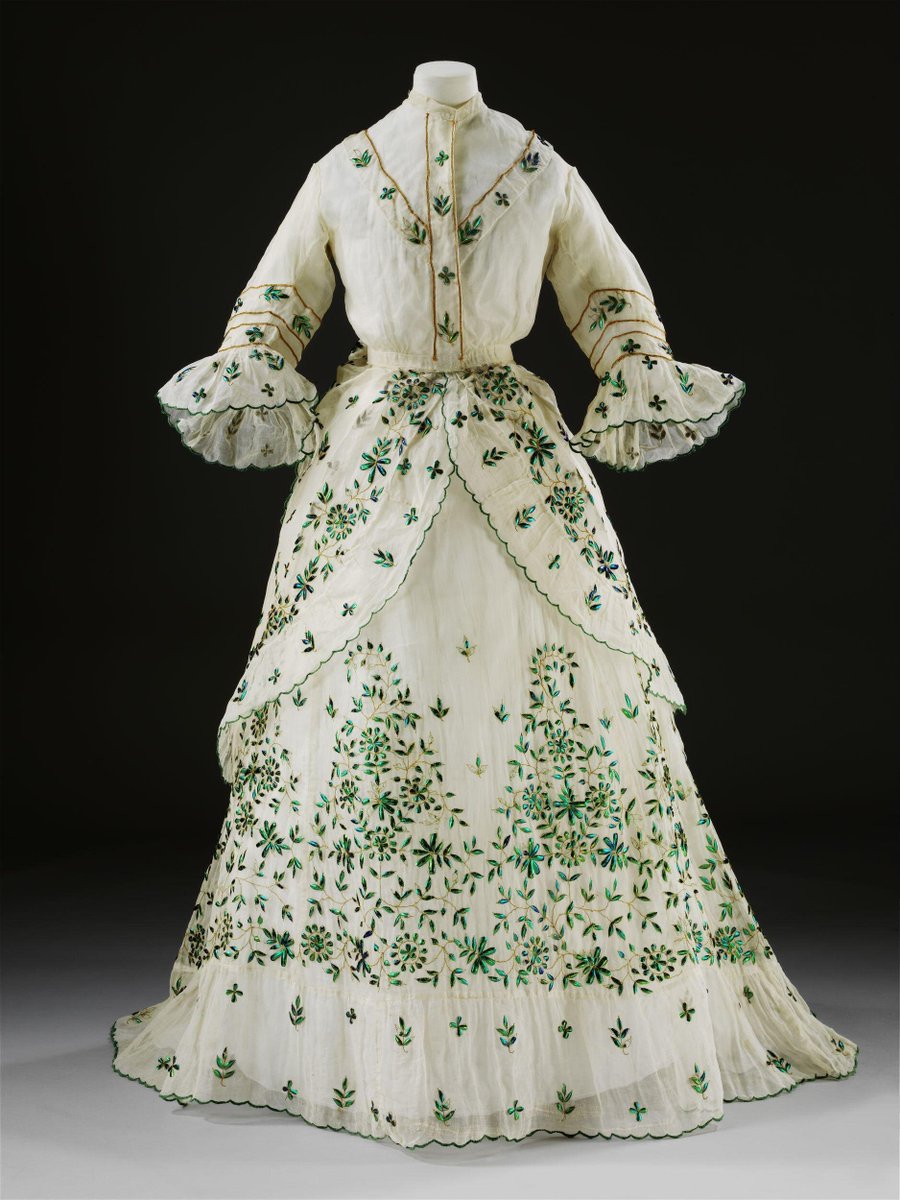
23 – And lastly, this wedding gown (1830) from a little earlier than the last — you can STILL see the influence of India in the embroidery, the draping, and the work. It's really all there.

24 -Where do I end this? A few ways. One, to question everything. Question privilege. Question history. Question art history. There is so much written in the margins, so much crossed out.
I love Regency fashion as much as the rest. But it is not without serious complication.
25 – Second, watch this video. It's not making muslin in India, but it is making cotton fabric. And you can see just how much work goes in to hand-spinning.
26 – And lastly, understand that fabric isn't just this season's hot trends.
It's culture. And in many cases, it's erasure. It's up to us to look through the rose colored glasses of romanticism and the deliberate narrative of Imperialism, and go beyond.

27 – The largest collections of Dhaka muslin remain in the UK.
Let that settle in. Anyway, here are some sources. LOTS of great reading here..
https://www.aramcoworld.com/Articles/May-2016/Our-Story-of-Dhaka-Muslin
https://medium.com/illumination-curated/a-historical-journey-of-muslin-pride-485070bfe53b
https://www.parinita.co.in/pages/muslin
https://www.racked.com/2018/1/10/16854076/marie-antoinette-dress-slave-trade-chemise-a-la-reine
https://www.bbc.com/future/article/20210316-the-legendary-fabric-that-no-one-knows-how-to-make
28 – More sources!
https://www.thecultureconcept.com/the-fabric-of-india-va-london-showcases-indian-textiles
29 – Thanks for coming to my #ThreadTalk! Here's one last gorgeous look at an artisan making muslin today… just ethereal.

Originally tweeted by Natania Barron (@NataniaBarron) on March 22, 2021.







